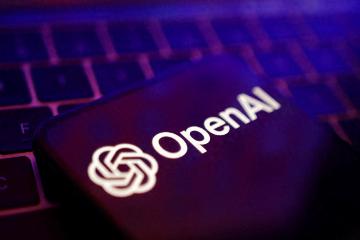The Era of Intelligent Computing Begins
Advertisements
The recent publication from the China Academy of Information and Communications Technology (CAICT) has brought to light ten significant trends projected for the year 2025, particularly emphasizing the swift evolution of large models, the onset of a transformative wave in AI terminals, and the arrival of intelligent computing power in the era of tens of thousandsSuch forecasts signal a pivotal moment in the landscape of technology and industry that many have been watching closely.
Industry experts underscore that the value chain associated with artificial intelligence is remarkably lengthyBeyond merely training large models, there exists a vast expanse of innovative opportunities yet to be exploredAs AI technology continues to carve its niche across various sectors, observers are increasingly intrigued by the potential creative space it opens up for entrepreneurs and developers alike.
The integration of large model industries is on the cusp of explosive growth
Advertisements
At a recent symposium in Shanghai, Yang Haijun, the chief engineer of the Shanghai Municipal Cyberspace Administration, reported that the city has registered an impressive total of 60 large modelsThis positions Shanghai as the second-highest in the nation, with 54 generative AI applications recorded, marking Shanghai as a leader in this technological frontier.
According to Wei Liang, Vice President of CAICT, 2024 is expected to mark the advent of large models in practical applications across myriad industriesAs adoption becomes more prolific, the value of application scenarios in vertical industries will become increasingly apparent, while calls for innovative collaboration across the industry chain will heightenWei expressed optimism that the synergy between industrial applications and novel technologies will foster rapid advancements and that the use of large models in the physical economy will greatly expand, thereby catalyzing transformational innovations in key sectors such as manufacturing.
In a discussion on the future trajectory of large models, Qiao Yu, a leading scientist at the Shanghai Artificial Intelligence Laboratory and Vice Dean of the Shanghai Chuangzhi Academy, highlighted the era's pressing need for deep integration across engineering, innovation, and the supply chain
Advertisements
He pointed out that after the emergence of multimodal models, embodied intelligence would become a crucial area for growth.
Qiao noted that China has already initiated clusters of tens of thousands in computational powerIn contrast, American tech giants are projected to surpass the threshold of one million units of NVIDIA’s H100 series by next year“This is an astonishing number,” he remarked, adding that as computational power increases, the ability for models to generate new capabilities will also improve significantly.
Nevertheless, Qiao stressed that enhancing computational power involves not only substantial financial investment but also substantial energy consumption challengesMoreover, there is a pressing need to explore solutions regarding the reliability, safety, and interpretability of large modelsHe pointed out an existing challenge where many large models can appear competent to the untrained eye yet lack the stability needed for consistent application in real-world scenarios
Advertisements
This discrepancy poses barriers to effective integration into operational practices.
Highlighting the pivotal role of data, Qiao emphasized that for large models to become more specialized and proficient, the integration of knowledge is essentialHe posed important questions regarding how this knowledge could be embedded more efficiently, noting that various industries possess their unique expertise and skillsTranslating this specialized knowledge into data—whether through direct learning mechanisms or external tools—creates significant avenues for innovation.
The advancement of multimodal models has emerged as a driving force behind embodied intelligence, which Qiao identifies as an essential growth sector for the futureOver the last year, numerous leading tech companies have unveiled multimodal models that not only demonstrate linguistic capabilities but also exhibit proficiency in processing images, videos, audio, and even scientific applications.
Qiao envisions that the developments in multimodal models will bridge applications with physical intelligent entities, like humanoid robots
- Bitcoin Plunges as Binance Reserves Dwindle
- Historical Rate Cuts and Economic Soft Landings
- Byte's Beanbag Fever: The AI Industry on the Rise
- Enhancing Quality in Expanding Inclusive Finance
- Breakfast FM Radio: December 27, 2024
This integration can potentiate solutions to real-world challenges faced in both production and daily life, thereby considerably broadening the boundaries for the application of general artificial intelligence technologies.
Qiao emphasized that the artificial intelligence supply chain extends across various segments, from chips and training frameworks to data and various applicationsHe argued that while training large models remains essential, attention must also focus on integrating and systematizing these componentsThrough coordinated optimization among these segments, new momentum for development could be generatedFor instance, during model training, it is crucial to consider how to align foundational training frameworks with domestic chips and communication technologies to optimize chip performance and improve the operation of future domestic models.
As for the AI landscape in Shanghai, Qiao acknowledged the city's rich array of application scenarios characterized by high quality and significant value

Your email address will not be published.Required fields are marked *
Join 70,000 subscribers!
By signing up, you agree to our Privacy Policy